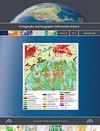Urban infrastructure audit: an effective protocol to digitize signalized intersections by mining street view images
IF 2.4
3区 地球科学
Q1 GEOGRAPHY
Cartography and Geographic Information Science
Pub Date : 2021-11-16
DOI:10.1080/15230406.2021.1992299
引用次数: 6
Abstract
ABSTRACT Auditing and mapping traffic infrastructure is a crucial task in urban management. For example, signalized intersections play an essential role in transportation management; however, effectively identifying these intersections remains unsolved. Traditionally, signalized intersection data are manually collected through field audits or checking street view images (SVIs), which is time-consuming and labor-intensive. This study proposes an effective protocol to identify signalized intersections using road networks and SVIs. First, we propose a six-step geoprocessing model to generate an intersection feature layer from road networks. Second, we utilize up to three nearest SVIs to capture streetscapes at each intersection. Then, a deep learning-based image segmentation model is adopted to recognize traffic light-related pixels from each SVI. Last, we design a post-processing step to generate new features characterizing SVIs’ segmentation results at each intersection and build a decision tree model to determine the traffic control type. Results demonstrate that the proposed protocol can effectively identify signalized intersections with an overall accuracy of 97.05%. It also proves the effectiveness of SVIs for auditing urban infrastructures. This study can directly benefit transportation agencies by providing a ready-to-use smart audit and mapping solution for large-scale identification and mapping of signalized intersections.城市基础设施审计:通过挖掘街景图像实现信号交叉口数字化的有效协议
摘要交通基础设施的审计和测绘是城市管理中的一项重要任务。例如,信号交叉口在交通管理中发挥着至关重要的作用;然而,有效识别这些交叉点仍然没有解决。传统上,信号交叉口数据是通过现场审计或检查街景图像(SVI)手动收集的,这既耗时又耗力。本研究提出了一种使用道路网络和SVI识别信号交叉口的有效协议。首先,我们提出了一个六步地质处理模型来从道路网络中生成交叉口特征层。其次,我们使用最多三个最近的SVI来捕捉每个十字路口的街景。然后,采用基于深度学习的图像分割模型从每个SVI中识别与红绿灯相关的像素。最后,我们设计了一个后处理步骤来生成表征SVI在每个交叉口的分割结果的新特征,并建立了一个决策树模型来确定交通控制类型。结果表明,该协议能够有效识别信号交叉口,总体准确率为97.05%,也证明了SVI在城市基础设施审计中的有效性。这项研究可以为信号交叉口的大规模识别和绘制提供一种现成的智能审计和绘制解决方案,从而直接使交通机构受益。
本文章由计算机程序翻译,如有差异,请以英文原文为准。
求助全文
约1分钟内获得全文
求助全文
来源期刊
CiteScore
5.20
自引率
20.00%
发文量
23
期刊介绍:
Cartography and Geographic Information Science (CaGIS) is the official publication of the Cartography and Geographic Information Society (CaGIS), a member organization of the American Congress on Surveying and Mapping (ACSM). The Cartography and Geographic Information Society supports research, education, and practices that improve the understanding, creation, analysis, and use of maps and geographic information. The society serves as a forum for the exchange of original concepts, techniques, approaches, and experiences by those who design, implement, and use geospatial technologies through the publication of authoritative articles and international papers.

 求助内容:
求助内容: 应助结果提醒方式:
应助结果提醒方式:


